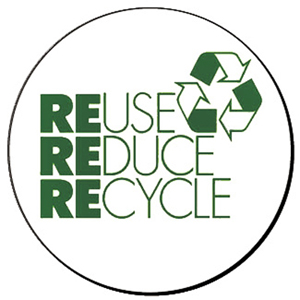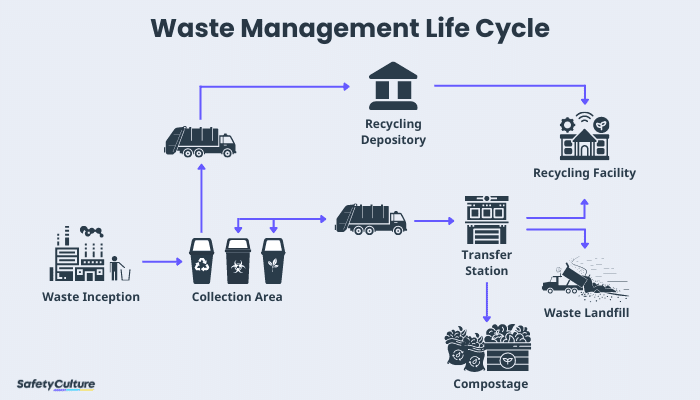The Influence of Recycling Lives Services on Communities and the Setting
The Influence of Recycling Lives Services on Communities and the Setting
Blog Article
Discovering Different Kinds Of Waste in Modern Waste Monitoring Systems
The contemporary landscape of waste monitoring involves navigating a complicated variety of waste types, each needing specialized handling and disposal techniques to minimize ecological impacts. Metropolitan solid waste, hazardous waste, electronic waste, and organic waste each existing distinctive challenges and opportunities for resource recovery. Ingenious solutions such as smart waste bins and waste-to-energy innovations are becoming crucial tools in improving effectiveness and sustainability. Recognizing these waste types is essential for fostering public awareness and motivating energetic involvement in sustainable methods. What methods can effectively deal with these varied types of waste while promoting a circular economic situation?
Metropolitan Solid Waste
Municipal strong waste, frequently described as family trash or waste, encompasses a selection of disposed of materials created by property, commercial, and institutional resources within a community. This waste stream generally consists of things such as product packaging, food scraps, lawn trimmings, paper, plastics, fabrics, and disposed of household products. The administration of municipal strong waste is an important component of city preparation and public health, demanding efficient collection, transport, and disposal systems.
Reliable waste monitoring systems are developed to minimize ecological impact while optimizing resource recovery. Composting organic waste, such as food scraps and backyard trimmings, not just decreases garbage dump use however likewise creates valuable dirt modifications.
Districts must additionally deal with the logistical and financial difficulties connected with waste monitoring. Implementing pay-as-you-throw systems, improving public awareness, and buying innovation can significantly improve waste diversion prices. By incorporating these practices, communities can promote sustainable areas, lower greenhouse gas emissions, and conserve all-natural resources.
Contaminated Materials

Reliable unsafe waste monitoring includes numerous vital steps: identification, treatment, disposal, and segregation. Segregation ensures that unsafe materials are stored separately from non-hazardous waste to protect against cross-contamination.
Governing structures, such as the Source Conservation and Recuperation Act (RCRA) in the USA, provide guidelines and criteria for unsafe waste monitoring. Adherence to these laws, paired with improvements in waste treatment innovations, is vital in minimizing the dangers linked with contaminated materials.
Electronic Waste
Digital waste, generally described as e-waste, stands for a swiftly growing obstacle in waste administration systems internationally. This kind of waste includes discarded digital devices and tools such as smart devices, computers, tvs, and other electronic appliances. The fast rate of technical innovation, paired with reducing product life-spans and consumer need for the most recent tools, has actually tremendously enhanced the volume of e-waste produced yearly.
E-waste is particularly troublesome due to its complex make-up, commonly including dangerous substances like mercury, lead, and cadmium, which posture significant ecological and health threats if not appropriately taken care of. Conversely, e-waste likewise consists of valuable materials such as silver, copper, and gold, which can be recouped and reused. The double nature of e-waste-- both dangerous and useful-- requires specialized handling, reusing, and disposal procedures.
Effective e-waste administration entails strict regulatory structures, durable collection systems, and progressed recycling technologies. Public awareness and involvement are vital, as incorrect disposal methods, such as prohibited unloading and casual recycling, exacerbate ecological contamination and carcinogen. Consequently, enhancing e-waste administration techniques is crucial for minimizing environmental influence and recovering important resources in a progressively digital world.

Organic Waste
Organic waste, making up kitchen area scraps, yard trimmings, and farming residues, stands for a considerable section of the international waste stream. This sort of waste is eco-friendly, meaning it can be broken down by microbes into less complex organic compounds. Despite its capacity for all-natural decomposition, inappropriate monitoring of organic waste can cause unfavorable environmental influences, consisting of the exhaust of greenhouse gases such as methane, which add to environment change.
Efficient monitoring of organic waste is crucial for lessening these environmental effects (recycling lives services). Composting is a commonly adopted method, changing natural waste right into nutrient-rich compost that can boost soil health and wellness and farming productivity. Furthermore, anaerobic digestion is an emerging modern technology that converts organic waste right into biogas, a renewable resource source, and digestate, which can be made use of as plant food
Municipalities and waste management entities need to execute durable organic waste collection and treatment programs to make the most of the benefits of these processes. Public education and learning projects can likewise play an essential duty in motivating families and organizations to separate organic waste from other kinds of waste. By prioritizing the management of natural waste, cultures this page can minimize garbage dump usage, reduced greenhouse gas emissions, and create important by-products for farming usage.

Cutting-edge Waste Administration
In the realm of waste monitoring, innovative methodologies are transforming exactly how societies manage their refuse, going for sustainability and effectiveness. These innovations encompass a range of technologies and practices that improve reusing prices, decrease landfill dependency, and lower environmental impact. One prominent innovation is the application of wise waste containers outfitted with sensing units that check fill degrees and maximize collection courses. This not just minimizes gas intake however also decreases greenhouse gas discharges.
One more noteworthy advancement is the adoption of waste-to-energy (WtE) modern technologies. By transforming non-recyclable waste into usable energy with processes such as incineration and anaerobic food digestion, WtE minimizes garbage dump burden and offers a renewable resource resource. Moreover, improvements in chemical recycling enable for the malfunction of complex plastics right into their original monomers, making it possible for the development of new, premium plastic items.
In addition, the circular economic situation model is getting traction, emphasizing the style of products and systems that focus on reusability and source efficiency. This alternative method urges markets to decrease waste generation from the start. Via these innovative techniques, modern-day waste administration systems are not only dealing with the prompt challenges of garbage disposal but also leading the way for a much more sustainable future.
Conclusion
A detailed understanding of municipal strong waste, contaminated materials, electronic waste, and natural waste, combined with the application of cutting-edge waste monitoring remedies, is imperative for alleviating environmental influences. Integrating innovations such as smart waste bins and waste-to-energy systems can enhance efficiency and sustainability. Efficient waste management methods not only foster resource healing however likewise promote public understanding and engagement, inevitably adding to the growth of a round economic climate.
The modern landscape of waste administration includes navigating a complicated selection of waste types, each calling for specialized handling and disposal approaches to minimize ecological effects. Local solid waste, harmful waste, electronic waste, and organic waste each existing unique obstacles and possibilities for source healing.Electronic waste, commonly referred to as e-waste, stands for a quickly growing challenge in waste management original site systems globally. Via these cutting-edge methods, contemporary waste administration systems are not only addressing the prompt difficulties of waste disposal however also paving the way more for a more sustainable future.
A comprehensive understanding of community strong waste, hazardous waste, digital waste, and organic waste, coupled with the implementation of cutting-edge waste administration solutions, is crucial for alleviating ecological effects. (recycling lives services)
Report this page